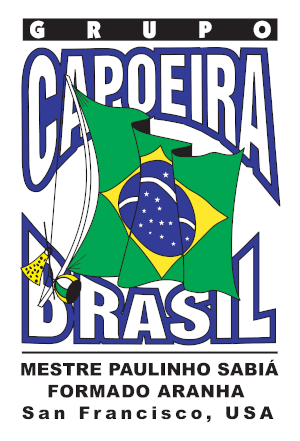Grupo Capoeira Brasil is an organization that practices, teaches, and demonstrates the Afro-Brazilian martial art of Capoeira. Grupo Capoeira Brasil practices a style of Capoeira known as Capoeira Regional Contemporânea. This style is derived from movements and sequences developed and systematized by Mestre Bimba’s Luta Regional Baiana, the adapted techniques of Grupo Senzala, as well as, influences and evolution of Capoeira from the founding Mestres of Grupo Capoeira Brasil, each of whom brought personal contributions specific to their ideology, stylistic methodology and personality.
History and Formation
Grupo Capoeira Brasil was founded on January 14, 1989 by Luis Roberto Simas, Paulo César da Silva Sousa, and Paulão Sales Neto known in the capoeira community by theirnome de guerra: Mestre Boneco, Mestre Paulinho Sabiá and Mestre Paulão Ceará,respectively. All three Mestres had trained under Grupo Senzala, one of the most influencing capoeira groups and pioneers of Capoeira Contemporânea during the late 1960s and 70s. Paulão, Boneco, and Paulinho trained under the guidance of Mestre Camisa.
During the late 1980s, as a result of different ideologies, many of Grupo Senzala’s “Corda Vermelhas”/”Red Cords” (Grupo Senzala’s highest graduation) left to pursue their own work. As such, Grupo Capoeira Brasil was inaugurated in the city of Niterói, Rio de Janeiro, Brazil, in honor of the recent centennial of the abolishment of slavery in Brazil (seeLei Ãurea). Under the supervision and blessing of its “padrinhos”, or godfathers, Mestre Gato, Mestre Peixinho and Mestre Rafael Flores (founders of Grupo Senzala), Mestre Suassuna, Mestre Itapoã, Mestre Peixinho, and the late Mestre Ezekiel, Grupo Capoeira Brasil arose. Today, Grupo Capoeira Brasil has spread internationally with groups and instructors throughout Brazil, as well as, in Africa, Australia, China, France, French Guiana, Germany, Hong Kong, the Netherlands, New Caledonia, Poland, South America,Taiwan, Turkey, New Zealand, and the United States.
(Information Wikipedia.org)

